The Casablanca of the North. Hike among spies and other light shadows in the neighborhood around Humlegården
(Google translate from Swedish language).
At night, Humlegården is still considered dangerous with murders both in reality and in decks. Most noteworthy is the Stureplan shooting at the Sturecompagniet with four dead and 20 injured. Formerly called the beech park because it was pickled and copulated among the bushes. A label that stands out is the biscuit jar for the many robberies.
Did spies meet in the park with mailboxes in darkened tribes? Highly possible for the neighborhood around were hangouts for missions and spy centers. Flora’s hill in Humlegården was one of the meeting places a for young NKVD officer Victor Starostin and Sven Teodor Engström, who in 1941 got life. The Russian used hidden mailboxes and invisible ink. He was revealed by the telegrams to Moscow that Swedish counter-espionage decrypted. Starostin was expelled because he was diplomatically protected by his cover as head of Intourist in Stockholm.
Birger Jarlsgatan 35

Plaza
A few steps from the Royal Library and you see Hotel Stockholm Plaza on Birger Jarlsgatan 35. In October 1943 in a suite at the hotel, Himmler’s masseur Felix Kersten merged with SS spy boss Walter Schellenberg and American businessman Abraham Hewitt (SOE agent who was friends with President Roosevelt ). The purpose was to start negotiations on separate peace with the Allies. It happened behind the back of Hitler and the allies were not interested either. But it was the beginning of contact with Count Folke Bernadotte and the rescue of thousands of Jews with the white buses.
Linnégatan 8
What prompted Himmler’s masseur Felix Kersten to move into the house on Linnégatan 8 in 1943? A retreat from Germany in the same way as for Zarah Leander? Latvia where he was born was not relevant. Nor was Finland where he was a citizen after participating in the Finnish civil war for the whites. The main reason was his close contact with Foreign Minister Christian Gunther to save the imprisoned Swedish directors in Warsaw from execution. In Poland they represented the Match Company and Asea so also for Jacob and Marcus Wallenberg Kersten became an important link to Himmler
Obliquely opposite, on Linnégatan 9-11, the child lived Raoul Wallenberg as comfort for his mother Maj Wising who became a widow when Raoul was born in 1912. Marcus and Alma Wallenberg tendered for the family who were offered summer fun at Malmvik.
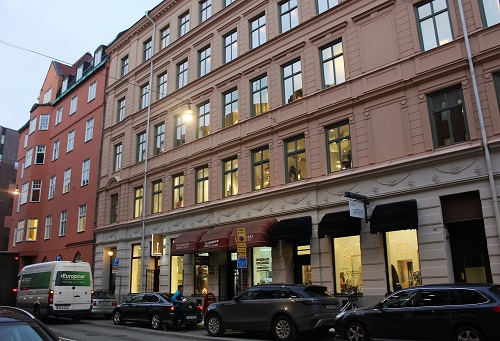
Linnégatan 9-11. Photo Ingemar Lindmark.
Linnégatan 28
The military attaché Makoto Oodera’s office on Linnégatan 28 was an important Japanese spy center from 1941, at the end of the war for the whole of Europe. Peacekeepers were there shortly before the bomb in Hiroshima. After the war, the Americans arrested him for figuring out how the office could crack their cipher code.
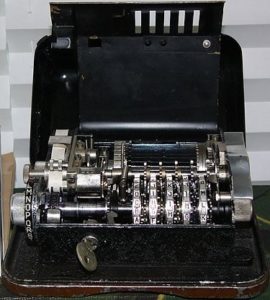 Onodera had purchased coding machines from AB Cryptoteknik on Lunmakargatan. The US had licensed 140,000 of Cryptotechnic’s machines. The Swedish General Staff also bought the machines, which were both cheap and compact. Therefore, they sold better than German competitor Enigma.
Onodera had purchased coding machines from AB Cryptoteknik on Lunmakargatan. The US had licensed 140,000 of Cryptotechnic’s machines. The Swedish General Staff also bought the machines, which were both cheap and compact. Therefore, they sold better than German competitor Enigma.
In front of the eyes of the Swedish military, Onodera bought the microfilms that revealed Russian signal traffic – which the Finns smuggled over to in Sweden in what is called Stella Polaris. Big thighs were hidden at the Defense Radio Center on Karlaplan 4.
Nybrogatan 27
From the fall of 1942, a bunch of German intelligence officers at Abwehr’s Büro Wagner on Nybrogatan 27, next door to the Östermalm Hall. Initially liked to be visited by Swedish officers, among other things to exchange secrets about the Soviet. Which did not stop two detectives from the security police in an apartment on top of a tobacco shop across the street.
 The office’s name was coined from the head doctor Colonel Hans Wagner, Papi called. Admittedly, it looked the corpulent Nazi, who, for his hero’s sake, looked more like a wine merchant – which he actually was. For the military profile was the second officer, Captain Albert Utermark, who, in addition to the administrative, managed the secret war organization Sweden. The espionage was aimed not only at the Soviet and the Allies, but also at attack targets in Sweden.
The office’s name was coined from the head doctor Colonel Hans Wagner, Papi called. Admittedly, it looked the corpulent Nazi, who, for his hero’s sake, looked more like a wine merchant – which he actually was. For the military profile was the second officer, Captain Albert Utermark, who, in addition to the administrative, managed the secret war organization Sweden. The espionage was aimed not only at the Soviet and the Allies, but also at attack targets in Sweden.
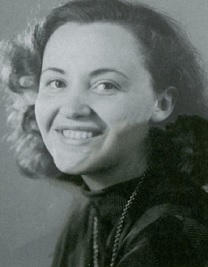
The secretary of the office knew Erika Schwarze, who paid secret agents. Which she revealed with the cover name Onkel for the C-office since she was seduced and acquired by the office’s James Bond, Helmuth Ternberg. succeeded in milking Utermark, which was happening to spirits and women, about a possible invasion of Sweden. Interrupted telegrams showed that City Council Director Robert Paulsson on the National Board of Health revealed the Schwartze mole for Gestapo. She was rescued from execution in Germany by getting her lung gassed at a Swedish sanatorium under a new name.
After the Abwehr chief Canari’s execution after the Hitler attack, Büro Wagner’s business shrank. Wagner and Utermark were expelled in February 1945 after Paulsson and journalist John Lönnegren were discovered as spies.
Karlavägen 59
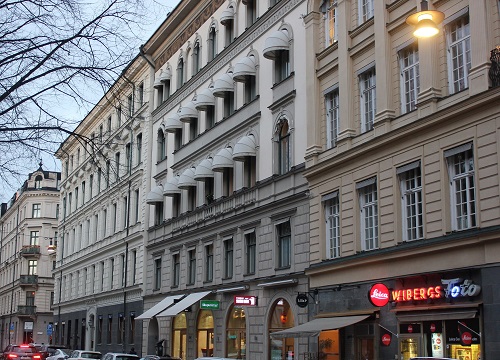
Karlavägen 59, the house with the awnings. Photo Ingemar Lindmark.

Enigma. From the Army Museum.
German telegram traffic went on Swedish telephony lines between Norway-Denmark and also to the legation in Stockholm. The risk that the Swedes milked the teagrams caused the Germans to abandon the encryption machine Enigma that Erika Schwarze first used.
Instead, she had to take a taxi every day to the flight attache’s office at Karlavägen 59, which was located atop a color shop. In Abwehr Luft as the radio station was called, more sophisticated Geheimschreiber was ciphered on them.
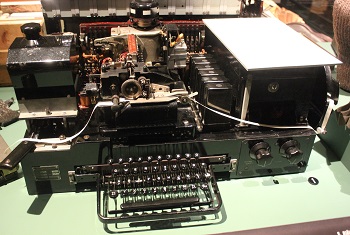
Geheimschreiber. From the Army Museum.
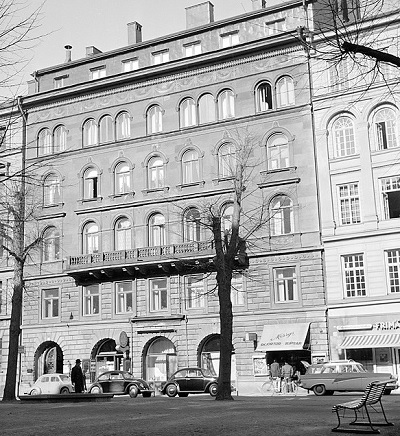
Karlavägen 59
Unencrypted telegrams that Schwartze handed over helped Professor Arne Beurling to break the German code with paper and pen in two weeks, ironically for Geheimschreiber. You did not reach the single digit. That code was rolled up with the help of 8,000 Englishmen at Bletchley Park.
The narrative voice belongs to Uno Willners who worked at the C-office during the war.
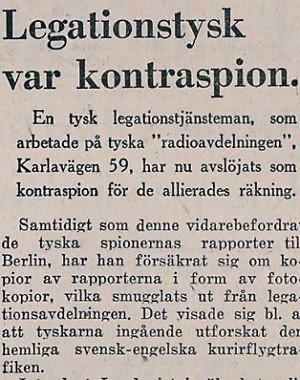
SvD 19460210
The defense’s crypto department at Karlaplan 4 chewed through 300,000 telegrams, not least important to be alerted about a heavy invasion.
A Finnish officer discovered a lost telegram on the Swedish Defense Staff. This leaked to the Germans so after 1943 the German telegrams could not read to outsiders. But after Stalingrad, Germany was not a threat to Sweden in the same way
Östermalmsgatan 36. Map / view . Route
Perhaps this environment on Östermalmsgatan 36 can explain Olof Palme’s elitist arrogance. As a child, he played with Daniel Bildt on the floor below – which over time became the father of no less arrogant Carl Bildt. Olof came as a toddler when his sister Catherine was seven and his brother Claes ten. In addition, there was a half-brother Sture Gunnarsson, whose hotel Palme sometimes visited in Jönköping.
Like his mother, Claes Palme was an active right-wing politician in Stockholm. As a Naval Law Attorney, he represented the Soviet State when their ship Tsesis went on a ground that the Maritime Administration forgot to notice. The mistake was revealed by cartographer Anders Ahlmark , brother of former leader of the APS Per Ahlmark. Thus a whistle-blower in the same class as Ingvar Bratt at Bofors and his relative Peter Bratt with IB and Geijer. As punishment, the work deported Ahlmark to the service of a lighthouse.
Claes Palme , whose law firm had gone bankrupt, was elected chairman of the Russian-owned car dealership Matreco AB in 1985, notorious for his spy operations in Sweden with KGB agents and many antennas on the roof.
The house Östermalmsgatan 36 was owned by Olof’s grandfather Sven Palme . He lived on the same floor as Olof’s parents together with his wife, Hanna von Born, the granddaughter of big estate owner from Finland. She brought with her a legacy that was traded in the purchase of the estate Steam south of Trosa. There Olof stayed in the parents’ funk villa.
Perhaps the conversations at the kitchen table in the East German home helped Olof politically become a cosmopolitan. Anti-Communism was inaugurated by the family’s commitment to Finland’s freedom. Olof was named after his uncle Olof, who fell for the whites in the Finnish civil war in 1918. On returning home from the boarding school in Sigtuna, Olof was able to share the concerns of his brother Claes, uncle Nils, Sven Ulrik and the other cousins who participated as volunteers in the Finnish winter war. Grandfather Sven was chairman of the Swedish-German Association until his death in 1934, the same autumn as Olof’s father Gunnar died.
Sturegatan 60
From Gunnar Ekelöf’s autobiography:

The hotel owner Jernsberg was often visited by people who had something to hide. The owner, a Norwegian friend who was a sailor, did not report the names of foreign guests to the police. One such guest was Willy Brandt. Another visitor was Gunanr Sösterby, a Norwegian opponent who shot Swedish student Claes Bertil Warholm on the Norwegian legation.
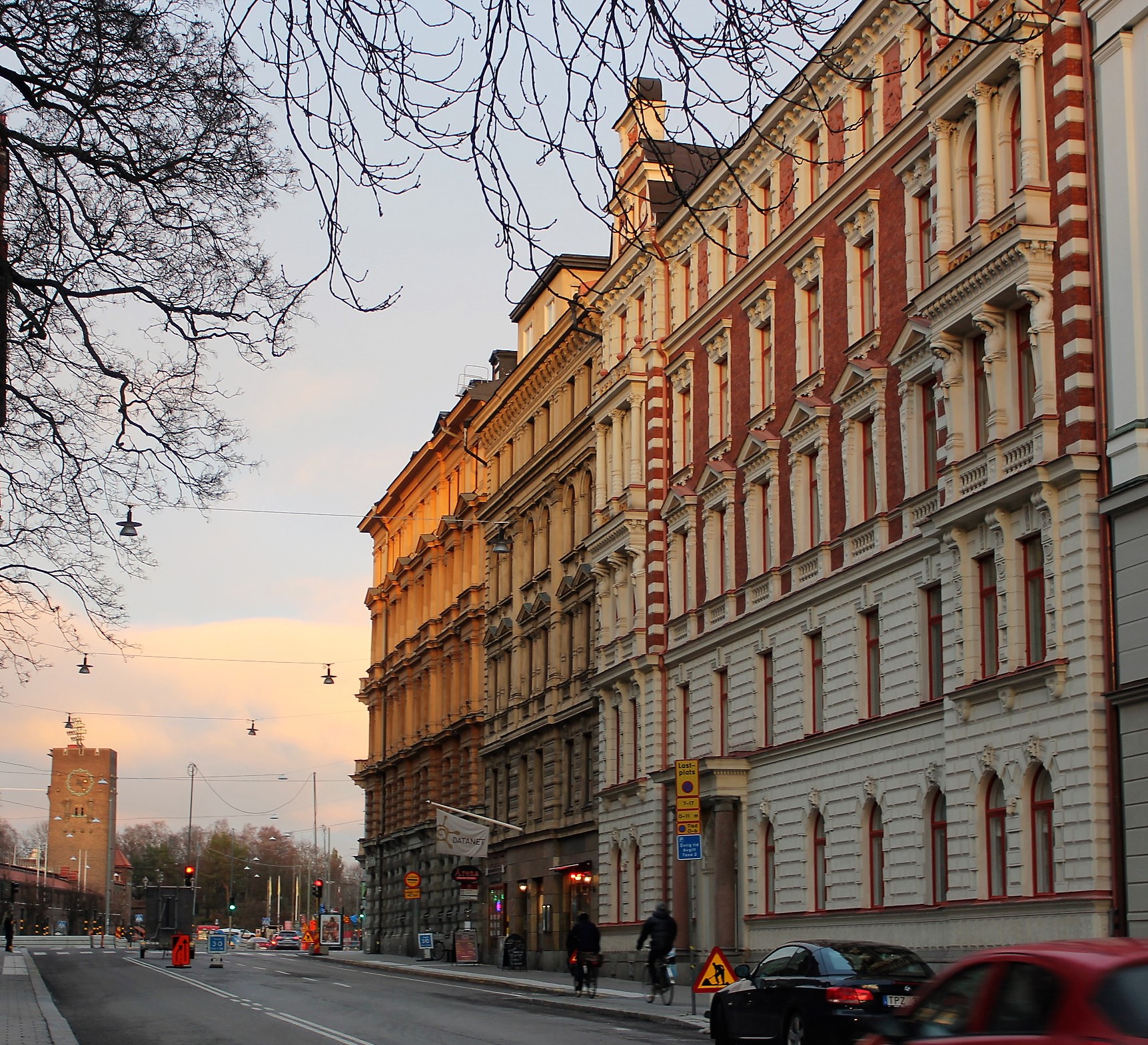
Sturegatan 60 on the right. Photo Ingemar Lindmark

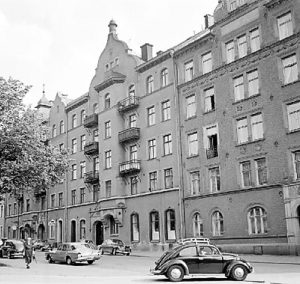
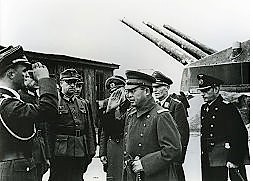
/ Ingemar Lindmark